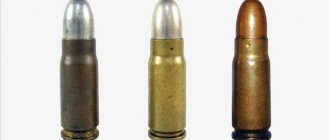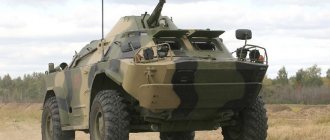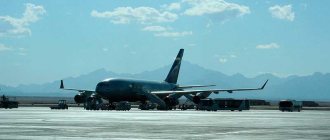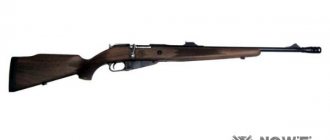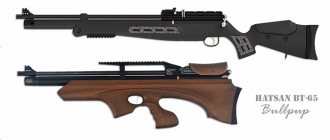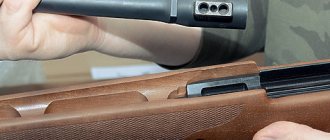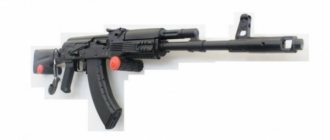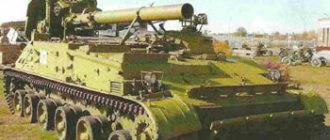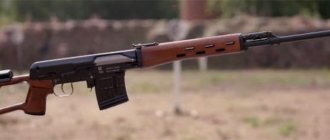No matter how they call the assassination of the 35th US President John F. Kennedy - both the biggest mystery of the 20th century and a conspiracy of the CIA and the FBI; There are dozens of different versions of who exactly shot in Dallas. There is still no final opinion about the identity of the killer.
But the chronicle of the crime is known literally minute by minute. Not only do we know exactly what happened in Dallas on November 22, 1963, but we can see it. Businessman Abraham Zapruder decided to film the passage of the presidential motorcade with a film camera, and ended up filming the murder. So the attempt was documented, and the film was immediately handed over to the special services. We will restore the picture too.
Jacqueline Kennedy and one of the president's guards immediately after the shot. Source: gazeta.ru
President's visit
So, in November 1963, Kennedy arrived in Texas. This trip was planned as part of the preparatory campaign for the 1964 presidential elections. The head of state himself noted that it was very important for him to win in Texas and Florida. In addition, Vice President Lyndon Johnson was a local native, and a trip to this state was given special significance.
But representatives of the special services were afraid of the visit. Literally a month before the president’s arrival, the US representative to the UN, Adlai Stevenson, was attacked in Dallas. Earlier, during one of Lyndon Johnson's speeches here, he was booed by a crowd of... housewives. On the eve of the president's arrival, leaflets with Kennedy's image and the words "Wanted for Treason" were posted around the city. The situation was tense, and trouble was expected. True, they thought that demonstrators would take to the streets with posters or throw rotten eggs at the president, nothing more.
Flyers posted in Dallas ahead of President Kennedy's visit. Source: rulit.me
Local authorities were more pessimistic. This is what William Manchester, a historian and journalist who wrote a chronicle of the assassination attempt at the request of the president’s family, writes in his book “The Assassination of President Kennedy”: “Federal Judge Sarah T. Hughes feared the incidents, prosecutor Barefoot Sanders, the senior-ranking Justice Department official in this part of Texas and the vice president's representative in Dallas, told Johnson's political adviser Cliff Carter that, given the political atmosphere in the city, a trip there seemed "inadvisable." City officials have been trembling in their knees since the very beginning of this trip. The wave of local hostility toward the federal government was reaching a breaking point, and they knew it.”
But the election campaign was approaching, and the presidential travel plan was not changed. On November 21, the presidential plane landed at San Antonio Airport (the second most populous city in Texas). Kennedy attended the Air Force Medical School, visited Houston, spoke at the university there, and attended a Democratic Party banquet.
The next day the President went to Dallas. With a difference of 5 minutes, first the vice president's plane arrived at Dallas Love Field airport, and then Kennedy. At approximately 11:50, the cortege of top officials moved towards the city. The Kennedys were in the limousine, which was fourth. In the same car with the President and First Lady were US Secret Service agent Roy Kellerman, Texas Governor John Connally and his wife, and agent William Greer was driving.
Competition: technical and not only
After the collapse of the Soviet Union and the liberalization of the local market, a flood of “foreign cars” poured into our country. The process brought both positive and negative aspects. On the one hand, airlines now have a wide choice and the opportunity not only to operate foreign-made aircraft, but also to enjoy access to borrowed capital of foreign origin for fleet renewal programs. On the other hand, individual managers were tempted to use business contacts with companies to solve personal problems.
Among other things, this led to the emergence of various types of so-called. “objective comparisons” of foreign models with domestic ones, where there was clearly a desire to present “foreign cars” in a more favorable light than they deserved “in terms of technology.” In particular, at the turn of the 2000s, journalists were presented with a comparison of the Boeing 767-300ER with the Il-96-300. Unfortunately, those who carried out the analysis clearly sympathized with the American car, “forgetting” in their comparison to take into account the much more capacious cargo compartments of the “silt” when calculating commercial efficiency. Meanwhile, the significantly larger fuselage diameter gives the IL-96-300 the ability, in addition to passengers, to take on board 16-18 LD-3 type containers. They are located in cargo compartments below the floor of the passenger compartment (belly cargo).
“The Il-96-300 aircraft is competitive with the Boeing 767, and a special study confirmed this,” Genrikh Novozhilov told us. – It should be understood that “-300” is a “truncated” version, and the plane was designed to carry 350 passengers! We can accommodate 386 passengers on the Il-96M; the corresponding cabin layout was made by us and preserved at the Design Bureau.”
The first flight of the Il-96-300 dates back to 1988. The type certificate was received in 1992, commercial operation began in 1993. In the same year, the Il-96M/T took off with an extended fuselage, from 55.35 to 63.94 meters. These variants were equipped with American Pratt&Whitney PW-2037 engines and Collins avionics. They have been certified in Russia and “shadow” certification by the North American Aviation Administration (US FAA).
The Americans highly appreciated our aircraft and even used its main parameters when designing their own next-generation aircraft. The creation of the base model of the Boeing 777-200 and Il-96M proceeded in parallel. These machines have surprisingly similar geometry: the fuselage diameter is about six meters, the difference in length and wing span is one meter. Since all this was preceded by the appearance of the “short” Il-96-300, the OKB should be blamed for them. S.V. Ilyushin’s plagiarism is not possible (and even the Il-86, which was produced from 1980 to 1994, has a fuselage diameter of 6.08 meters). American designers first accepted the fuselage diameter as 6.08 meters, recalls Genrikh Vasilyevich. But then they added another 120 mm, and, as a result, the “three sevens” had a final figure of 6.2 meters.
In the nineties, both Aeroflot and Transaero not only promised to buy dozens of Il-96M/T (and, later, Il-96-400), but even signed corresponding agreements. True, the then management of the airlines did not strive to implement them. But they purchased the Boeing 777, sequentially, in several batches. Aeroflot “explained” the acquisition of the Boeing 777-200ER (the very first batch for the airline) by saying that they were “necessary in order to roll out routes for the Il-96M.”
A few years later, however, the “three sevens” were returned to the lessors (but the Il-96M was never taken) because it turned out to be too spacious for the airline’s passenger flows at that time. A new purchase of improved aircraft of this model took place under the current leadership. And how super-capacious Boeings “helped” Transaero accumulate debts and go bankrupt – much was written about this at the end of last year, when the airline ceased operating activities.
Three shots
Initially, it was planned that the motorcade would go straight along Main Street - there was no need to slow down on it. But for some reason the route was changed, and the cars drove along Elm Street, where cars had to slow down. In addition, on Elm Street, the motorcade was closer to the educational literature warehouse, from where the shooting took place.
Kennedy's motorcade movement diagram. Source: libmir.com
The shots rang out at 12:30. Eyewitnesses mistook them either for the cracks of a firecracker, or for the sound of an exhaust; even the special agents did not immediately get their bearings. There were three shots in total (although even this is controversial), Kennedy was hit in the back first, the second bullet hit him in the head, and this wound became fatal. Six minutes later the motorcade arrived at the nearest hospital, and at 12:40 the president died.
The required forensic medical studies that should have been done on site were not carried out. Kennedy's body was immediately sent to Washington.
Employees of the educational literature warehouse told police that the shots were fired from their building. Based on a series of statements, an hour later, Officer Tippit attempted to detain warehouse worker Lee Harvey Oswald. He had the pistol with which he shot Tippit. As a result, Oswald was captured, but two days later he also died. He was shot by a certain Jack Ruby while the suspect was being taken out of the police station. In this way he wanted to “justify” his hometown.
Jack Ruby. Source: gazeta.ru
So, by November 24, the president was killed, and so was the main suspect. Nevertheless, in accordance with the decree of the new President Lyndon Johnson, a commission was formed, headed by Chief Justice of the US Supreme Court Earl Warren. There were seven people in total. For a long time they studied the testimony of witnesses and documents, and eventually concluded that a lone killer had attempted to assassinate the president. Jack Ruby, in their opinion, also acted alone and had purely personal motives for the murder.
Instead of the “Chinese” CR929, Russia needs its own Il-96-400M
It is reported that China has begun assembling its first long-range wide-body airliner, the CR929, developed jointly with Russia.
Serial production of this promising aircraft should begin in 2025. The news is positive, but upon reflection it raises several uncomfortable questions. Project CR929 (C – China, R – Russia) is considered the most high-tech cooperation between Beijing and Moscow. China is striving to finally gain a foothold in the closed club of aircraft manufacturing powers that have a full cycle of production of aircraft of all types. Wide-body airliners with powerful engines are aerobatics, and the Chinese comrades turned to Russia, which has Soviet experience and technological developments, for help. So let's see without unnecessary emotions what both sides will ultimately get.
CR929
A cooperation agreement between China and the Russian Federation was signed back in 2014.
It is planned to jointly develop and create a modern wide-body long-haul airliner in three configurations at once. The base model will be called CR 929-600 and will carry 281 passengers in three-class configuration, 291 passengers in two-class configuration and 405 in single-class cabin layout. The younger, shortened version of the airliner is called CR 929-500 (230 passengers), and the older, lengthened version will be called CR 929-700 (320 passengers). At the customer's request, it is even possible to create a model capable of carrying up to 440 people, but only for short flights. The flight range of the Russian-Chinese airliner will vary from 12 to 14 thousand kilometers. Overall, this is an interesting aircraft that can provide real competition to the products of the Western duopoly. But this is where unpleasant questions begin to arise. On the one hand, the shares of Moscow and Beijing in the project are distributed 50% to 50%. There is an engineering center in Russia, we will have all the technical documentation, and we will supply composite wings for the airliner. On the other hand, all other production and final assembly of the CR929 will be carried out in China. Is it good or bad?
How to look. In total, the cooperation is expected to produce at least 800 CR929 aircraft over the next 20 years, but where will they go? Chinese partners do not hide the fact that they are developing an aircraft for their domestic market, and national air carriers will become buyers. China's needs for long-haul airliners over the next two decades are estimated at 1,000 aircraft. This means that there will definitely be demand for the CR929 in the Middle Kingdom.
But what are we going to do? The Russian sky is now completely dominated by American and European airliners, which, of course, must be fought by gradually replacing them with domestic products. But as for the long-haul segment, domestic demand for wide-body aircraft in our country is estimated at a modest 50-120 aircraft over the next 20 years. Let's face it, it's sparse. For the sake of such small volumes, is it worth completely localizing the production of CR929 in Russia? That's a lot of money. Buy components for assembly in China? Yes, easily, if the story with the “Supedjet” taught no one anything. Now we seem to be friends with China, but what will happen in 10-20 years?
Of course, you can try to increase production volumes by starting to export aircraft abroad, but where? Let us recall that Boeing and Airbus, which found themselves in a systemic crisis due to the consequences of the coronavirus pandemic, concluded a truce among themselves aimed against potential competitors from China and the Russian Federation. The US and EU will do everything possible to prevent Russian-made aircraft from flying in the skies over the Old and New Worlds. Where else can you export? Third World countries? CIS? But Boeing and Airbus dominate there too, and China will soon appear with the CR929. Will we be able to compete with the Chinese by selling the same aircraft? Yes, the PRC will simply crush us with large production volumes and better terms of delivery and after-sales service.
It turns out that we helped the Celestial Empire obtain a modern wide-body aircraft, but we ourselves seemed to be left without it. Yes, we have a 50% share in a joint venture in China, which is good, but for the production of the airliner in our country we will depend on the goodwill of Beijing. Somehow not very good. Are there any other options?
Il-96-400M
Fortunately, there are options, and good ones.
Let us recall that within the framework of the CR929 project, developments on the Soviet and Russian long-haul airliner Il-96 were undoubtedly used. This wide-body aircraft, depending on the layout, can carry from 300 to 435 passengers, which makes it competitive in this indicator with Chinese, American, and European counterparts. The airliner is so reliable that it is the Il-96-300PU version that is used as a presidential aircraft in our country. The most important thing is that its entire production base has been preserved, and there is no need to create anything from scratch or restore what was destroyed. In 2016, the Russian government allocated 50 billion rubles for the development of a modernized version of the airliner under the symbol Il-96-400M. A natural question arises: why are we investing billions in a joint project with the Chinese when we have our own wide-body aircraft? Why not just start serial production of the Il-96-400M?
Alas, everything is somewhat more complicated than we would like. The IL-96 is an excellent and reliable aircraft, which one can safely trust with the lives of top officials of the state, but its weak point is its low fuel efficiency. The airliner is equipped with four PS-90A turbofan engines, which together consume more fuel than Western aircraft of the same class. For a presidential plane this is not critical, but for commercial carriers it is even more so. Despite all its advantages, the Il-96 did not find demand among airlines. However, everything may soon change. There are two options for how to make a domestic airliner competitive.
The first involves installing four PD-14 engines, developed for the medium-range MS-21, instead of the PS-90A. The second option is much more attractive. We are talking about the heavy-duty PD-35 aircraft engine, which is being developed in our country for the Chinese CR929. Beijing initially counted on Western-made power plants: General Electric or Rolls-Royce, but due to the worsening relations with the United States, their supplies are now in question. If domestic developers hurry up, Russia will receive a guaranteed market for 800 hundred long-haul airliners and subsequent maintenance of aircraft engines. The main thing here is not to give any licenses for the production of PD-35 to Chinese partners.
More importantly, we will be able to use this super-powerful engine on the Il-96-400M, where only two of them will be enough. Instead of trying to compete with China by selling the same CR929 in foreign markets, we can deeply modernize our IL-96, for example, using composite materials in the production of wings and tail elements, which will lead to weight reduction. In terms of such an important indicator as fuel efficiency, the Russian airliner will be on par with its foreign counterparts. No additional localization will be needed, since the entire component base is already available in the country, production, albeit small-scale, is underway.
This makes it possible to distribute the Il-96-400M and CR929 on the market. Let the Chinese sell jointly developed aircraft in Southeast Asia, and Russia will receive 50% of the profits and guaranteed sales of the PD-35. We will be able to build entirely domestic wide-body aircraft, both for our own needs and for promotion on the CIS market and in third world countries, where Soviet-made equipment is known and respected. In addition, mass production of the heavy-duty PD-35 for two types of passenger airliners will make it possible to revive the cargo An-124 “Ruslan” in Russia under a new name. In general, with a rational approach, continuous advantages are obtained.
Under suspicion
To understand what happened next, you need to travel to New Orleans, the hometown of Lee Harvey Oswald, where he last visited in 1963. On the evening of November 22, an argument occurred between Guy Banister and Jack Martin in a local bar. Banister ran a small detective agency here, Martin worked for him. The reason for the quarrel had nothing to do with the Kennedy assassination, it was purely a production conflict. In the heat of the argument, Banister pulled out a pistol and hit Martin in the head with it several times. He shouted: “Are you going to kill me the way you killed Kennedy?”
Police officers lead Lee Harvey Oswald. Source: Wikimedia Commons
The phrase aroused suspicion. Martin, who was admitted to the hospital, was interrogated, and he said that his boss Banister knew a certain David Ferry, and he, in turn, knew Lee Harvey Oswald quite well. The victim further claimed that Ferry convinced Oswald to attack the president through hypnosis. Martin was considered not entirely normal, but in connection with the assassination of the president, the FBI pursued every theory. Ferry was also interrogated, but the case did not receive any further progress in 1963.
Commercial exploitation
From 1993 to 2013, six Il-96-300 were operated by air. Three more such aircraft entered the fleet of Domodedovo Airlines, two - KrasAir (under an agreement with IFC, they were operated until 2008). For a short time, one or two aircraft belonging to the OKB flew on Atlant-Soyuz flights and others. Among non-commercial structures, the “short” version is used by the presidential aviation squadron (including former KrasAir aircraft).
Ilyushin Finance Co. did a lot of work to promote the Il-96-300 on the international market. The Voronezh leasing company sold three newly built aircraft. They were acquired by Cuba using loans from Russian banks provided under the sovereign guarantees of the island Republic. So far, IL-96-300 deliveries to Cuba in 2005-2006. remain the only case of export of products of domestic four-engine passenger aircraft of the new generation.
Last year, the fleet of the national carrier Cubana de Aviacion was replenished with a fourth aircraft. Unlike the previous ones, these “silts” were previously operated by Aeroflot. This experience also represents a significant event in the history of Russian aircraft leasing. We are talking about cars from the secondary market that have undergone a change of ownership and major repairs before being sold abroad.
The commercial operation of the Il-96-300 as part of Cubana de Aviacion can be considered successful. Well-constructed maintenance and repair practices played a big role here. The specialized Russian structure IFK-Tekhnik helps local aviators solve this and other issues.
Providing after-sales service (PSS) is a long-standing, complex topic for domestic aircraft manufacturers. Operating organizations often criticized AK Il for insufficient attention to their problems. Therefore, the successful experience of operating the Il-96-300 in Cuba can hardly be overestimated. By agreement with the Cuban authorities and Cubana de Aviacion, Ilyushin Finance Co. proposed and implemented in practice logistics schemes aimed at ensuring uninterrupted operation of Russian aircraft supplied under a leasing scheme with export credit.
IFC shared its experience with the Design Bureau, conducting relevant courses for specialists of the design bureau. Here is what Nikolai Dmitrievich Talikov told us on this topic: “Finally, we understood what was what. With the help of Ilyushin Finance Co., using the example of Il-96 aircraft, we came to understand what is required to ensure uninterrupted operation of aircraft. How to build approaches to providing after-sales service and how to create a support system for operating organizations.”
“Having received new aircraft, operating organizations should not experience problems with them. It is necessary that they extract maximum profits by intensively operating aircraft while ensuring flight safety. In fact, we began to think in their categories too,” continues Nikolai Dmitrievich. The general designer promises to “turn our face to exploitation” instead of “puffing out our cheeks and saying that we know all your problems - deal with them yourself.”
After the withdrawal of the Il-96-300 from Aeroflot’s fleet, Cubana de Aviacion remained the world’s only commercial operator of aircraft of this modification. As a rule, the interior of Cuban cars accommodates 262 passengers: the cabin has 18 business class seats with a seat pitch of 54 inches and 244 economy class seats with a seat pitch of 32 inches. There is an option with a separate cabin for high-ranking officials - they travel on “silts” when public service matters require it.
